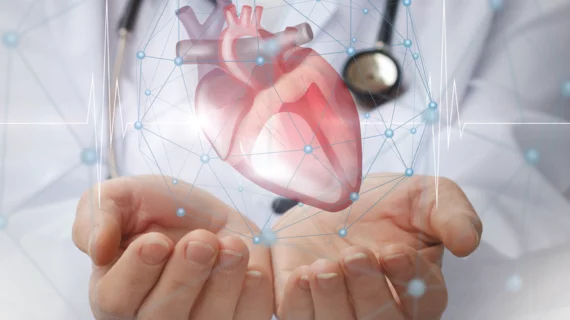A team of researchers believes it has uncovered important new details about what, exactly, happens inside a beating heart, sharing its findings in Proceedings of the National Academy of Sciences.
Specialists from Eastern Virginia Medical School (EVMS), Florida State University (FSU) and the University of Virginia identified and evaluated a small muscle filament inside a beating heart—and they believe it is the first time this filament has been properly examined.
“For decades the structure of the thin filament at this important point was unknown,” co-author Vitold E. Galkin, PhD, of the department of physiological sciences at EVMS, said in a prepared statement. “This dramatically limited our understanding of the thin filament regulation by calcium.”
The researchers spent two years preparing the specimen so it could be examined before turning to a cryo-electron microscope to observe it up close. They believe the insights gained by watching the filament in action could be a significant breakthrough in the field of cardiac care.
“We can now fully understand how inherited diseases of the heart affect its capability to work,” said co-author Jose R. Pinto, PhD, associate professor of biomedical sciences at FSU. “Basically, we created a new structural model for the cardiac thin filament, and based on that, we can now address several existing questions about the functioning of the heart in health and disease.”
“Our results provide a new, fundamental basis for understanding and modeling the thin filament in health and disease because a number of genetic heart diseases affect proteins of the thin filament,” added co-author P. Bryant Chase, PhD, a professor of biological science at FSU.
Galkin called the team’s work an “advance in our fundamental knowledge of cardiac muscle regulation.” Next, he noted, specialists may be able to tailor specific patient interventions that improve everyday muscle function.
The National Heart, Lung and Blood Institute funded this study. The group’s analysis can be read here.

